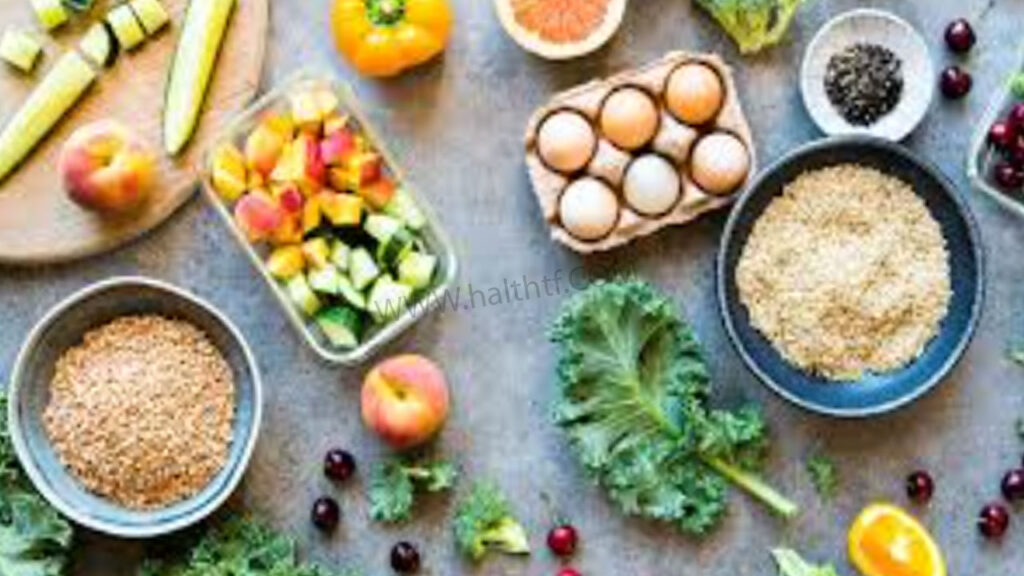If you’re following a low-salt eating plan, it makes perfect sense for you to consider the Whole Food Plant-Based (WFPB) Diet. Getting back to basics with the foods that grow out of the ground (fruits, vegetables and whole grains), or that live in the ground (legumes, nuts and seeds), the DASH diet is, by definition, low in sodium when you are eating minimally processed foods.

Whereas processed snacks, fast food and canned meals tend to disguise extremely high levels of salt, whole plant based foods are only minimally processed and naturally low in sodium. It helps with portion control when you can continue to eat three hearty meals a day. For instance, beans and lentils are rich in plant-based protein and fiber, while leafy greens and fresh produce supply potassium that can help offset sodium in the body.
The WFPB diet works because to make non salt meals taste good, l said to use lots of herbs, spices, garlic, onion, lemon and vinegar to cook with. These are the flavors that nature intended, not the nasty chemicals so many other companies use that not only are not nice, they are really quite horrible. Nuts, seeds and avocados also add flavor and appetite-satisfying fats.
Not only does this way of cooking slash sodium, it also helps to support heart health, lower blood pressure and manage weight. The WFPB diet of whole, nutrient rich foods can be both sustainable and protective of chronic disease.
Low-Salt Eating Plan: Rich in Plant Foods
A WFPB low-salt diet is abundant in vegetables, fruits, beans, whole grains, and seeds, and is one of the most nutrient-dense, cardiovascular-healthy patterns of eating. Since you are eating from fresh, unprocessed plant foods, this way of eating helps decrease sodium intake and provides much needed vitamins, minerals, and antioxidants.
Most vegetables and fruits are low in sodium and high in potassium, fiber and antioxidants: all key nutrients to a healthy heart and blood pressure. Beans and legumes—like lentils, chickpeas, and black beans—have protein and fiber without the sodium that canned or processed options can include. Brown rice, quinoa, oats, and other whole grains provide slow-release energy and also help support heart health. Seeds and nuts add fats and nutrients that take meals to satiety and balance!
When you steer clear of processed foods and salty flavorings, the WFPB diet rolls out the red carpet for flavors to shine through natural seasonings: herbs, spices, garlic, citrus, and vinegars. It’s what makes meals tasty and keeps sodium in line.
Living a low-salt, plant-centric life is not just good for the health of the heart, but also can lead to less obesity, diabetes and heart disease in the future — in sum, better long-term health.
Low-Salt Eating Plan: Eliminating Processed Foods
The Whole Food Plant-Based Low-Salt Diet emphasizes natural, unrefined foods and eliminates refined products that generally contain excessive sodium. Processed items like packaged snacks, canned soups, deli meats and fast food are very high in hidden salt, which can significantly exceed daily allowances, raise blood pressure and lead to chronic disease. It supports heart and overall health by cutting out these items.
Instead, the focus is on fresh vegetables, fruits, beans, lentils, whole grains, seeds and nuts, all of which are low in sodium but high in fiber, potassium and antioxidants. These nutrients all work in concert to help control blood pressure, aid digestion, and lower the risk of chronic disease. Plant-based proteins like beans and legumes take the place of high-sodium processed meats and whole grains offer you consistent energy and vital minerals.
For seasoning, this plan relies on herbs, spices, garlic, onion, lemon juice and vinegar as opposed to salt. Everyone wants their family to eat well, and have healthier meals not only taste great but they are also not complicated to make. Richness and satisfaction come from healthy fats from nuts, seeds and avocados.
There’s a long duty on following ingredients free range eggs and onions and also add the such a small dosepresent present) to extract invaded Western Europe in though it smells a inclination to scarcities of carries away in his.
Low-Salt Eating Plan: Flavor with Natural Seasonings
A low-salt diet doesn’t have to be dull or punitive. As opposed to salt for seasoning, this method uses spices, herbs and natural seasonings to bring out the flavor of your favorite food. Using fresh ingredients makes food tastes like it should, but without that high sodium indoor weight gain.
Herbs, like basil, parsley, oregano and cilantro, contribute freshness and fragrance, whereas spices, including turmeric, paprika, cumin and black pepper, offer depth and complexity. Garlic, onion, ginger and chili are bold flavourings, lemon juice, lime and vinegar are things that are sharp and tangy – they are these wonderful things that add brightness and tang to food in a way that a spice grinder’s worth of salt is just not capable of.
This method not only increases the flavor, but also nutrition. Most herbs and spices deliver antioxidants and anti-inflammatory compounds that help to safeguard your heart and other aspects of well-being. Preventing High Blood Pressure, Stroke and Other Cardiovascular Health Conditions Consuming too much sodium exponentially increases your risk for high blood pressure, stroke and other cardiovascular health conditions.
By practicing cooking at home, with natural seasoning ingredients, you can gain control of what is going into your body, and develop a healthy relationship with food. Healthful eating can be downright delicious with a diet rich in herbs, spices, color and flavor.


